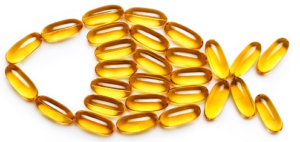I get asked all the time by patients how best to control inflammation. I have a specific protocol I personally use to control my old man’s tendency for that dangerous slow burn that we all experience as we age, so I want to share that with you. Let’s dig in.
What You Shouldn’t Use
The poet laureate William Carlos Williams, a physician, once wrote: “I’ve seen death come on slow as rust, or as quickly and suddenly as a doorknob come loose in the hand…” I may be paraphrasing, but the point here is that one of those doorknob moments is a sudden-death heart attack or stroke. Regrettably, a sure-fire way to achieve that sort of surprise death is by taking NSAID drugs.
NSAIDs are the common anti-inflammatory drugs you see in the grocery store or by prescription:
- Celebrex/Celecoxib
- Ibuprofen/Motrin/Advil
- Aleve/Naprosyn/Naproxen Sodium
- Indomethacin (Indocin)
- Diclofenac (Cambia, Cataflam, Voltaren-XR, Zipsor, Zorvolex)
Many of my patients take these drugs to function. However, they all have serious cardiac effects that can double to quadruple your chances of dropping dead and being that guy or gal with the loose doorknob in the hand (1). Hence, how does this aging athlete control inflammation while avoiding NSAIDs?
Three Simple Supplements To Control Inflammation
I control my inflammation by taking three simple supplements every day:
- High-dose fish oil
- Hige-dose Curcumin
- Glucosamine/Chondroitin
Let’s go over each:
High-Dose Fish Oil

Many people take fish oil that they buy at the grocery store or Costco. The problem is that they’re generally taking far too low a dose and buying rancid oil. Let’s dig in.
Fish oil containing omega-3 fatty acids has been shown to be helpful for arthritis symptoms (9,10). This likely extends to reducing the progression of arthritis, but that’s not 100% confirmed as of this writing. However, suffice it to say that there’s enough research backing to add this stuff to your supplement regimen.
If it’s good for arthritis, how much should you take? The whole fish oil craze got started when it was noted that despite being obese, Greenland Eskimos (Inuits) didn’t have many of the same inflammation-related diseases (2). Inuits consume on average 5,700 mg of Omega-3 EPA per day. So using this math, this group consumes about the equivalent of 28 usual fish oil caps (8,400 mg of omega 3’s) per day!
I’d recommend something closer to this higher “Eskimo” dose. Having said that, you should find out what levels of fish oil consumption reduce your aches and pains. This may be different for everybody. One way to cut down on all of those capsules is to find a brand of EPA/DHA purified fish oil. These can have as much as 600 mg or more of omega 3’s. So for a concentrate that has 600 mg of omega 3’s, this would mean about 9-10 caps a day, or 3 with each meal per pill. A concrete, high dose example is a brand called Nordic Naturals that makes an EPA Xtra formulation with about 1,000 mg of EPA and 1,500 mg of omega 3’s per 2 capsules. Here, you would start at 2 pills twice a day. If that doesn’t work over 1-2 weeks to reduce joint aching, then go to 2 pills three times a day (4,500 mg) or 4 pills in the morning, 2 with lunch, and 2 with dinner (6,000 mg/day). For our Regenexx fish oil brand, that would be 3 caps in the morning and three in the evening.
High-Dose Curcumin

Curcumin is an Indian spice derived from the turmeric root (3). It’s been shown to be as effective in reducing pain and swelling as ibuprofen (Advil/Motrin), without the downside cardiac side effects (4). Realize that there’s an art to finding the right curcumin brand which has to do with how Indian food is prepared, meaning the spicer the better! Let me explain how this matters for inflammation.
Curcumin is absorbed poorly in the gut. Hence, if you want to make it absorb better, one way to do that is to add black pepper, just like it’s done in Indian cooking. In fact, there’s a black pepper extract called Peperine which you need to have in the curcumin supplement to make it work. How much should you take? One to two 500-750 mg capsules twice a day. I tend to take mine all in the morning as I find that with my GI reflux, taking it at night can make that worse.
Glucosamine/Chondroitin
Glucosamine and chondroitin are natural components that make up normal cartilage (5). Glucosamine is a building block that along with chondrocytes helps make cartilage, and chondroitin helps the cartilage hold onto water. These supplements are usually made by chemically breaking down shellfish or other natural animal by-products like bovine hooves. Quite a few studies have shown that they can relieve pain and improve function in patients with arthritis with one showing that they are as good as prescription-strength Celebrex (8).
What’s really interesting is that Glucosamine and Chondroitin may be disease-modifying (6,7). This means that they may slow arthritis progression as studies have demonstrated less lost cartilage based on MRI and x-ray tracking. That’s pretty amazing for a supplement.
How much should you take? The dose for glucosamine sulfate is 1500 mg and chondroitin sulfate is 800 mg. Most supplements are made from shellfish, so if you have a shellfish allergy, then look for a supplement sourced from bovines. There is even a vegetarian version sourced from corn fermentation.
The upshot? There are better ways to control inflammation than getting addicted to dangerous NSAID drugs! Use these natural supplements to keep that old age, inflammatory fire under control.
____________________________________
References:
(1) Varga Z, Sabzwari SRA, Vargova V. Cardiovascular Risk of Nonsteroidal Anti-Inflammatory Drugs: An Under-Recognized Public Health Issue. Cureus. 2017;9(4):e1144. Published 2017 Apr 8. doi: 10.7759/cureus.1144
(2) O’Keefe JH Jr1, Harris WS. From Inuit to implementation: omega-3 fatty acids come of age. Mayo Clin Proc. 2000 Jun;75(6):607-14. https://www.ncbi.nlm.nih.gov/pubmed/10852422
(3) Rahmani AH, Alsahli MA, Aly SM, Khan MA, Aldebasi YH. Role of Curcumin in Disease Prevention and Treatment. Adv Biomed Res. 2018;7:38. Published 2018 Feb 28. doi: 10.4103/abr.abr_147_16
(4) Kuptniratsaikul V, Dajpratham P, Taechaarpornkul W, et al. Efficacy and safety of Curcuma domestica extracts compared with ibuprofen in patients with knee osteoarthritis: a multicenter study. Clin Interv Aging. 2014;9:451–458. Published 2014 Mar 20. doi: 10.2147/CIA.S58535
(5) Ogata T, Ideno Y, Akai M, et al. Effects of glucosamine in patients with osteoarthritis of the knee: a systematic review and meta-analysis. Clin Rheumatol. 2018;37(9):2479–2487. doi: 10.1007/s10067-018-4106-2
(6) Wildi LM, Raynauld JP, Martel-Pelletier J, et al. Chondroitin sulphate reduces both cartilage volume loss and bone marrow lesions in knee osteoarthritis patients starting as early as 6 months after initiation of therapy: a randomised, double-blind, placebo-controlled pilot study using MRI. Ann Rheum Dis. 2011;70(6):982–989. doi: 10.1136/ard.2010.140848
(7) Fransen M1, Agaliotis M1, Nairn L1, Votrubec M2, Bridgett L1, Su S3, Jan S4, March L5, Edmonds J6, Norton R4, Woodward M4, Day R7; LEGS study collaborative group. Glucosamine and chondroitin for knee osteoarthritis: a double-blind randomised placebo-controlled clinical trial evaluating single and combination regimens. Ann Rheum Dis. 2015 May;74(5):851-8. doi: 10.1136/annrheumdis-2013-203954.
(8) Zeng C, Wei J, Li H, et al. Effectiveness and safety of Glucosamine, chondroitin, the two in combination, or celecoxib in the treatment of osteoarthritis of the knee. Sci Rep. 2015;5:16827. Published 2015 Nov 18. doi: 10.1038/srep16827
(9) Felson DT, Bischoff-Ferrari HA. Dietary fatty acids for the treatment of OA, including fish oil. Ann Rheum Dis. 2016;75(1):1–2. doi: 10.1136/annrheumdis-2015-208329
(10) Loef M, Schoones JW, Kloppenburg M, Ioan-Facsinay A. Fatty acids and osteoarthritis: different types, different effects. Joint Bone Spine. 2019 Jul;86(4):451-458. doi: 10.1016/j.jbspin.2018.07.005.
